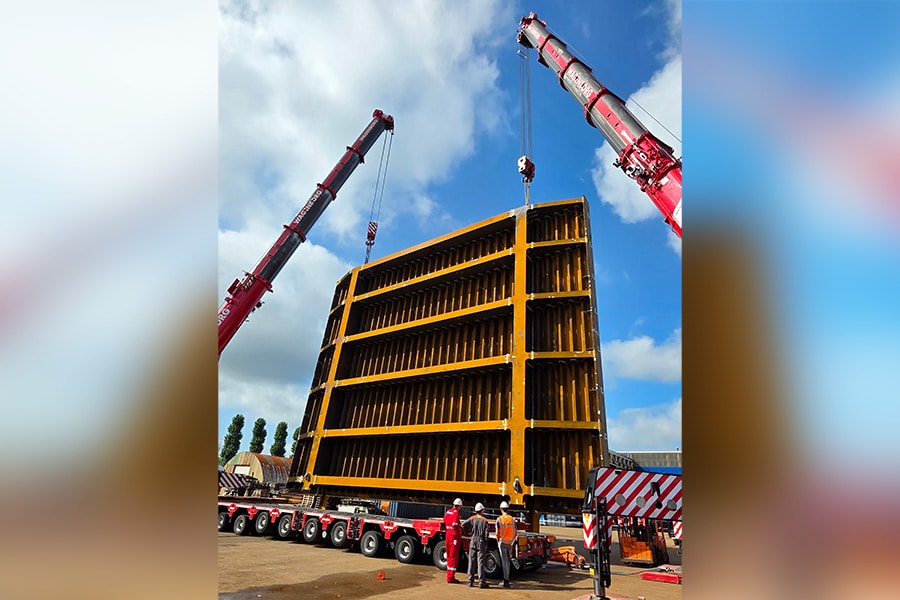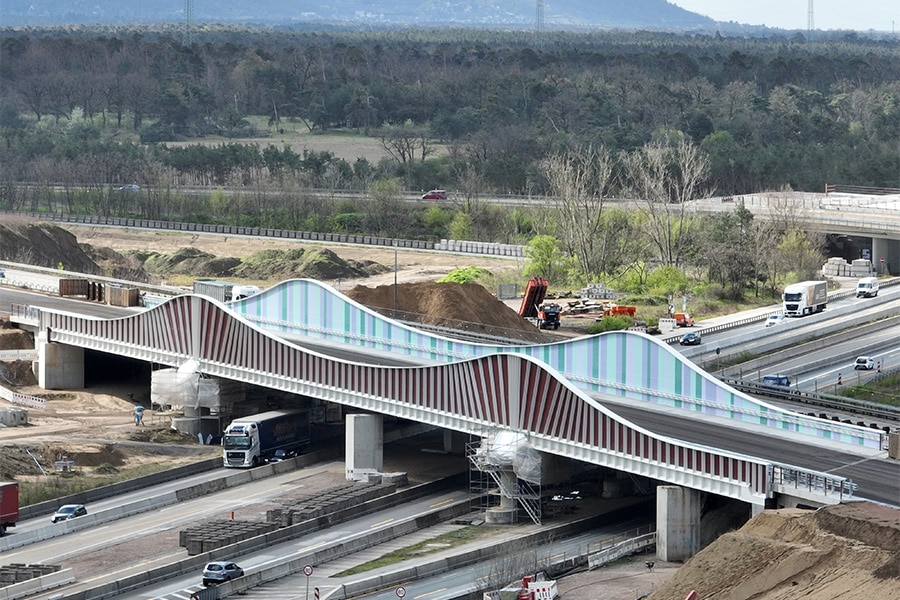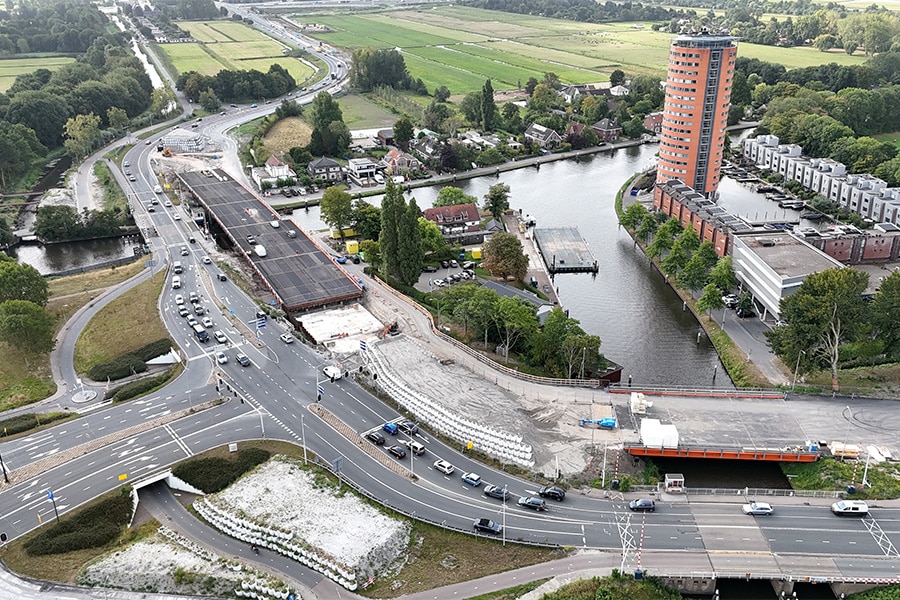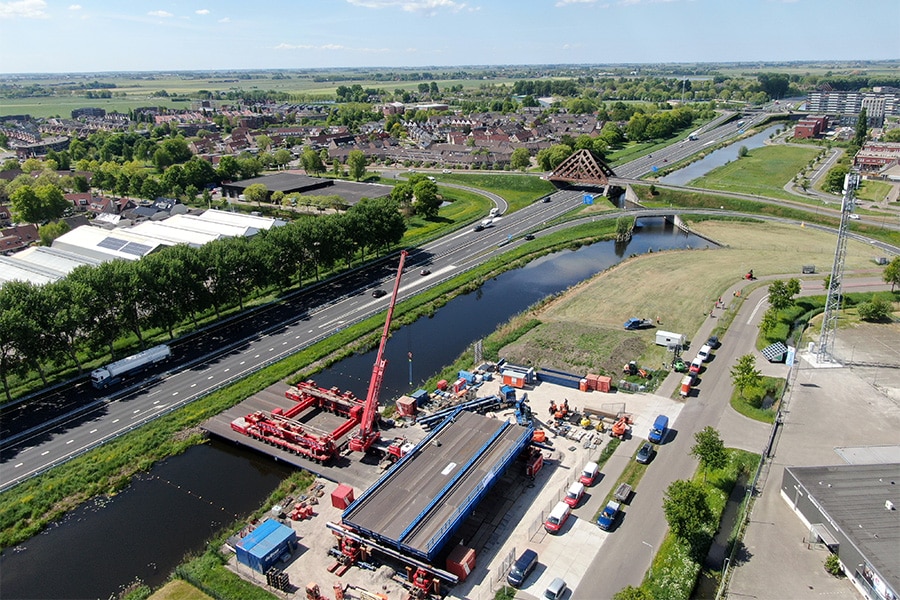
Renovate with composite: extremely strong, fast and durable
Demolition not necessary
If it were up to Matthijs Raak of FiberCore Europe, composite would be used on every bridge or viaduct in need of renovation. As a specialist in composite bridges, lock gates and bridge decks for infrastructure, this sounds like preaching to the choir. However, if you look at the many advantages of composite, the application of this durable material is only logical. What makes composite so interesting? More about that in this article.

Throughout the Netherlands, bridges are currently scheduled for maintenance. These include bicycle and pedestrian bridges, road bridges and movable bridges. But also a growing number of corrugated bridges and lot bridges. Until now, many wooden and steel bridge decks and their underlying structures have had to be replaced at the end of their useful life. "Renovating a bridge is always more sustainable and faster than demolishing and building new," said Matthijs Raak, managing director FiberCore Europe. "By replacing the old bridge deck with a composite bridge deck with patented InfraCore Inside technology, you kill six birds with one stone. With this technology, we build very robust bridges that retain their strength and sturdiness even in the long term. Because the bridge decks come ready-made from the factory, they are very quick to install and thus quickly usable again. Moreover, they last at least 100 years, so our bridges are very durable." The production of prefabricated FiberCore bridges also excels in sustainability, according to Raak. "You can make a complicated calculation for that, but composite is just very lightweight. We use very few raw materials and that has a beneficial effect on CO2-emissions. Indeed, our prefabricated bridges contribute to the highest achievable project-specific ambition level on CO2-Performance Ladder.

Moreover, due to the low weight, the bridges and decks are also easy to transport which also has a positive effect on CO2-emissions."
Virtually free in maintenance
In addition to being highly durable, FiberCore bridges, lock gates and bridge decks are very cost-effective in the long run. "Road salt, diesel oil, chemicals, bird droppings, weather and wind contribute to aging of bridges made of conventional materials. This leads to concrete rot, rust or wood rot. A composite bridge structure, on the other hand, is virtually maintenance-free. Only the bridge railing needs to be cleaned occasionally and the wear layer checked."

Throughout the Netherlands
With all these advantages of composite, you would say, why don't we apply it as standard? According to Raak, this is mainly due to the relative unfamiliarity in the infrastructure sector. "You usually don't recognize a composite bridge as such. But if someone asks me; 'where can I look at such a bridge?', I only have to ask where someone lives and I can often name one or more in that area." In fact, FiberCore installs bridges throughout the Netherlands and beyond. By now almost 1,500 of them worldwide. Nice example is the municipality of Purmerend, a forerunner in this field. Here you can find bridges made of FiberCore in all shapes and sizes. Raak: "These bridges are a nice example of our new standard bridge concept. Bridges are often considered custom-made, but we standardize the construction and keep all the freedom for design of the railing. This allows us not only to deliver them even faster, but also to reuse them later at another location."
Also for widening bridges
FiberCore bridge decks are also suitable for installation on an existing bridge. For example, if the bridge needs to be widened with a bicycle highway or pedestrian path. A good example is the Suurhoff Bridge, the connection to the Maasvlakte. FiberCore decks are also used in hybrid bridges. In these, bridges with a steel or concrete main supporting structure are provided with a prefabricated composite bridge deck. This gives you a lighter bridge with a lighter foundation. The bridge over the A27 at Lunetten is a good example of this.
Demolition not necessary
An interesting application for aging concrete bridges, is the innovative SUREbridge concept. "With this innovation, we strengthen the aging structure. When necessary, we widen it by sliding a prefabricated composite panel onto it. Demolition is not necessary, which saves time, inconvenience and detour traffic. The bridge can thus last up to 50 years again, with minimal maintenance."
Raak: "There is much more to tell about composite bridges and lock gates. I invite everyone to visit our factory in Rotterdam and take a look at our website. There you can see and read more about all the bridges we have already installed, as well as the options for leasing a bridge."
Heeft u vragen over dit artikel, project of product?
Neem dan rechtstreeks contact op met FiberCore Europe.
 Contact opnemen
Contact opnemen




